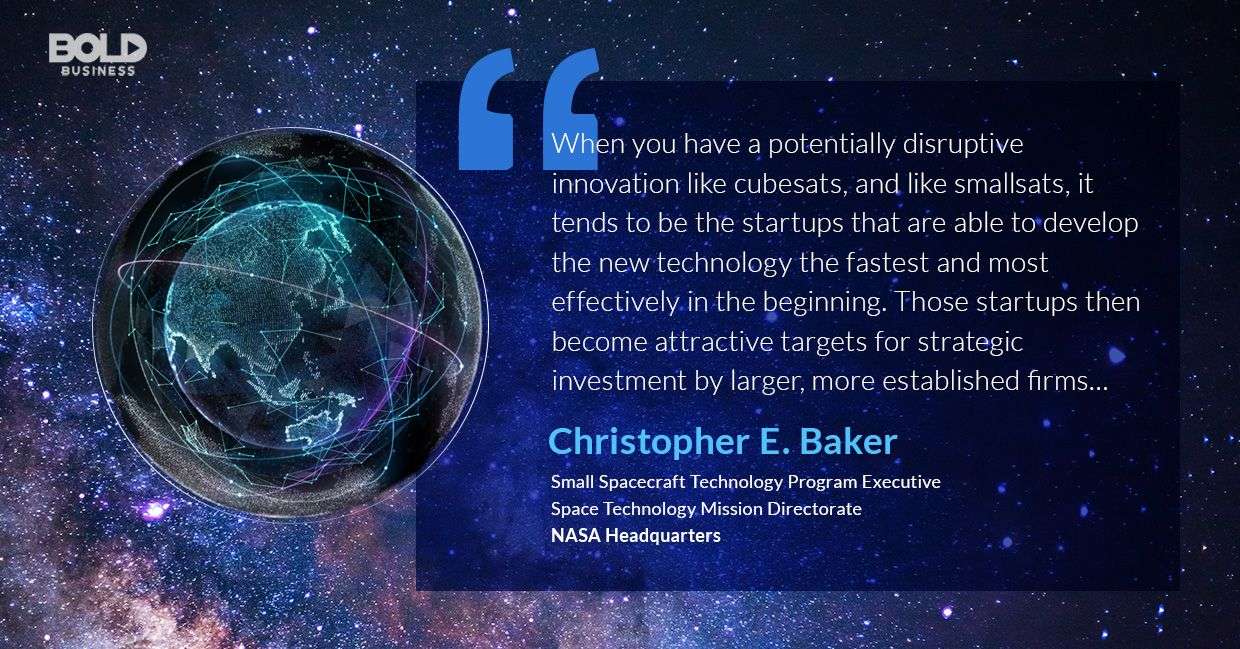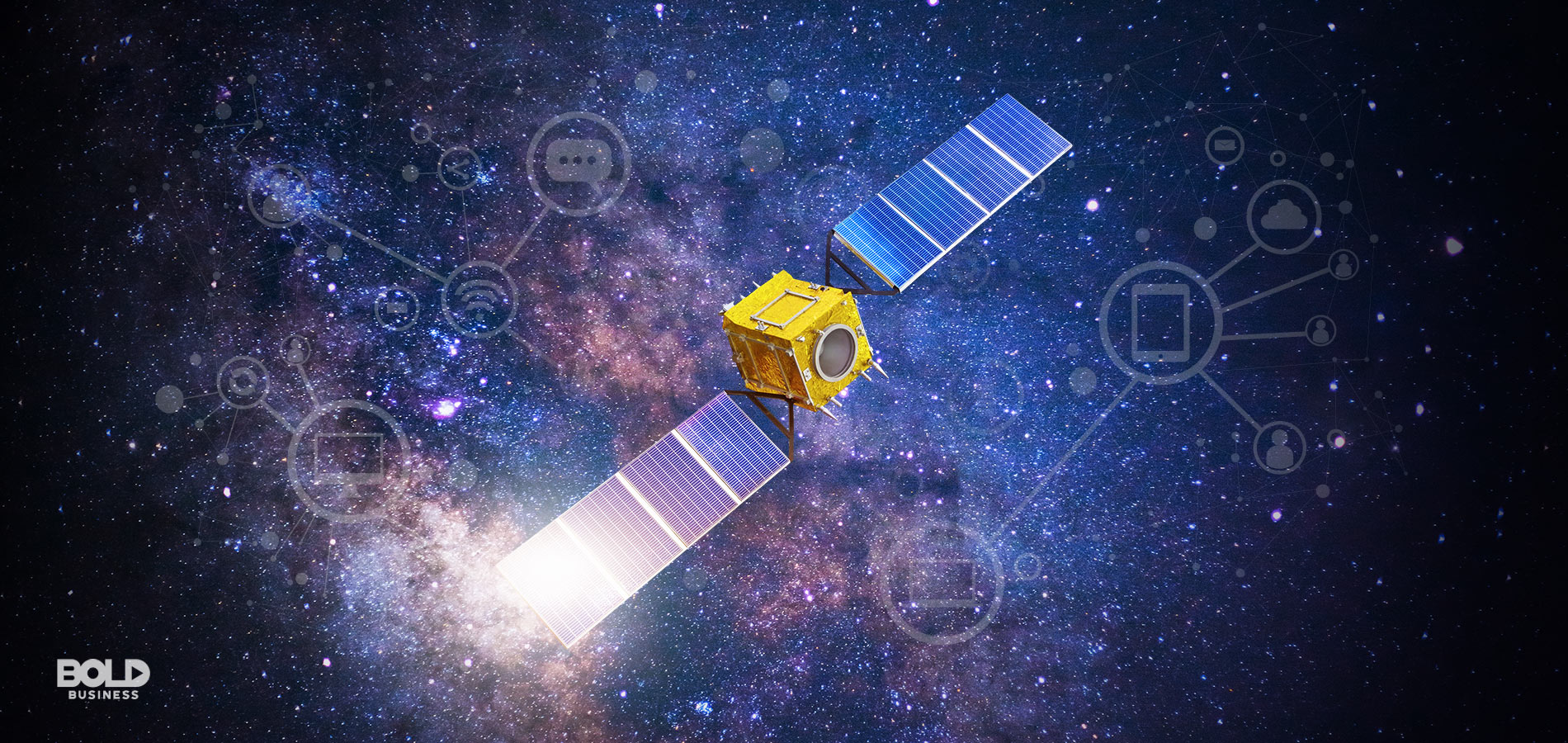The era of space “clunkers” and manufacturing companies producing big, bulky satellites is ending, with smaller, sleeker satellites taking to the skies. The small satellite market is booming, and a handful of companies are set to make a significant impact on global communications. Estimates suggest that the small satellite market will soon reach $37 billion in revenue. When it comes to the Space Economy, it’s clear the small satellite sector can’t be ignored.
Compared to larger satellites, these smaller versions offer many advantages with relatively few disadvantages. Also, advances in both space and technological fields are propelling satellite manufacturing companies to develop remarkably innovative and compact devices. Still, most importantly, the small satellite market is being driven by population needs. Roughly 3 billion people lack adequate internet access—a case which this emerging sector hopes to resolve.

Defining the Small Satellite Market
Historically, the small satellite market has been enjoying 3 percent year-on-year growth. But what exactly is the small satellite market? By definition, a small satellite is one that is 500 kilograms or less. However, numerous subcategories of these miniature spacecraft exist. Specifically, those between 100 and 500 kilograms are called mini-satellites while those between 10 and 100 kilograms are termed micro-satellites. And nano-satellites weigh between 1 and 10 kilograms. The number of satellite manufacturing companies has been rising in these areas in particular.
In addition to these specifications, other standards are also relevant to the small satellite market. Most small satellite manufacturing companies abide by CubeSat Design Specifications and refer to these spacecraft as CubeSats. The most common size of most small satellites is therefore 10 cm by 10 cm by 11.35 cm. Today, these small satellites are attracting attention because of their ability to orbit the earth in a “low-orbit”. And at the same time, their technological capacities are offering new solutions for global communications that were not available previously.

The Field of Satellite Manufacturing Companies
Clearly, SpaceX has received significant attention among satellite manufacturing companies based on the recent launches of its Falcon Rockets. In 2019 alone, SpaceX launched 60 Starlink small satellites that are supposed to help create a global broadband internet network. Over the next decade, SpaceX is expected to launch another 12,000 of these to complete its $10-billion project. However, SpaceX is undoubtedly not alone in these endeavors. The following is a list of some of the other small satellite manufacturing companies currently in the industry.
- SES – Among satellite manufacturing companies, SES is one of the largest in the world. While it has longstanding expertise in Geostationary Equatorial Orbit (GEO) satellites, SES recently purchased O3b. This purchase allows SES to also offer medium orbit satellites to expand its prominence in the small satellite market.
- Astranis – This San Francisco startup is rapidly making waves in the small satellite market. Rather than approaching a low earth orbit like other small satellite manufacturing companies, it is focused on GEO satellites. The company has now developed a lightweight 300-kilogram small satellite in this regard. Astranis plans to use its innovative device to bridge the global digital divide.
- OneWeb – Greg Wyler is well known in the small satellite market after founding O3b. The name of O3b refers to the “other 3 billion”—which pertains to those lacking reasonable Internet access. After SES bought O3b, Wyler founded OneWeb. Markedly, OneWeb intends to launch 650 low earth orbit small satellites by 2027. OneWeb also plans to provide global broadband internet access using its satellites.
- AAC Microtec – In terms of small satellite manufacturing companies, AAC Microtec is the world leader in CubeSats. That has been the case since it acquired Clyde Space in 2017. It is well-recognized as a high-end producer within the small satellite market. Likewise, AAC Microtec is known for its quality satellite subsystems and components. Recently, the company signed a collaborative agreement with the U.K. Government’s Innovation Agency.
- Pumpkin Space Systems – This company provides nanosatellites and CubeSats to a variety of sectors including government, private industries, and educational organizations. In addition, it is the world’s largest supplier of CubeSat kits. As a result, many industry innovators have selected Pumpkin Space Systems as their partner for their satellite projects. These innovators include Fleet Space technologies and SpaceVR, which are both interested in high-quality nanosatellite construction.

The Pros and Cons of the Small Satellite Market
Based on the rising number of small satellite manufacturing companies, it is evident that opportunities exist. Indeed, small satellites offer many advantages over their larger counterparts. For one, small satellites have a lower cost of manufacturing and can be mass-produced more easily. Likewise, because they can be launched in groups called “swarms,” they have a lower launch cost as well. And with lower manufacturing costs, their financial risk for damage or malfunction is reduced as well.
While these advantages are notable, small satellites also nevertheless have some downsides. For one, small satellites tend to have a shorter lifespan and experience more rapid orbital decay in space. Their size also limits the amount of hardware they can carry, and they have a lower transmitter output signal. And while they have solar and lithium battery power, they lack large power sources or major propulsion systems. Such downsides continue to represent challenges for the small satellite market.
The Benefits of Small Satellites for the Future Abound!
While concerns exist about the space debris that small satellites may bring, many tout the potential benefits they will provide. Among the most notable is an enhanced capacity to allow the entire globe to access the internet. Such a case will notably have positive impacts on global communication systems in many other ways. If their disadvantages can be eliminated or resolved, then small satellites have the potential to replace many ground systems already in place. Therefore, advances in this remarkable sector should be quite intriguing over the next decade, given that progress has already been made—and is still being made today.







